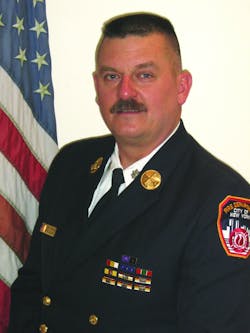The Fire Scene: Know the Role of the Engine Company Chauffeur
Every fire department has an engine, and every engine has a driver or engineer or chauffeur. In the FDNY, we call them the engine company chauffeur or ECC. In some departments, this person is a firefighter who is assigned the duties of the driver, and in other departments, this is a rank or position above firefighter. However your department handles that has no bearing on the real skills and abilities that are required for this important position in the engine. Let’s take a look at just what the ECC really needs to know.
Vital skills for the ECC
I, like you, have heard many firefighters talking about their ECC and how they performed at a recent structural fire. You might even hear a young and uninformed firefighter say that all the ECC does at a fire is “hook up and look up.” Nothing could be further from the truth. The ECC must have several vitally important skills in order to perform effectively on the fireground.
The first and most obvious is knowing every aspect of the engine—everything! For starters, the ECC needs to know the technical and practical operation of the fire pump. Most of that work is done from the pump panel, but not all of it. The ECC must understand how and where the water supply enters the pump and what the pump does with that water. Some apparatus have intakes on all sides of the rig and some don’t. Some intakes are gated, meaning they can be opened or closed, and others are not. There are various size intakes that require various size hoselines to supply. A clear understanding of pressures and friction loss and how to handle pressure problems is also vital. All of that information is vital to the task of getting water to the advancing attack crew inside the burning building.
The second set of skills required for the ECC is a complete and thorough understanding of the operation of all of the tools, equipment and appliances carried on the engine. Every fitting and every hydrant wrench has a specific set of uses and applications. In the FDNY, there are several different types of hydrant security devices that each require a different hydrant wrench to open. I remember when I was the captain of E-48 in the Bronx. My ECC would pull over to a hydrant at 2 a.m. on the way back from a run. He would ask the probie to get off the rig and select the correct hydrant wrench for the hydrant he had stopped at. Needless to say, the probie knew his hydrants almost as good as the ECC. Does your company have a portable deluge nozzle? Does it require specific pressures and/or fittings to be put into operation? The ECC needs to know this cold. How about the dreaded foam nozzle and eductor? A true measure of a good engine is how quickly they can produce a foam stream. Are there stacked tips on the deck gun? When is each best used? How does that portable ladder rack come down, and how do we get it off the rack? Do you use LDH for supply and when should that be dropped? And where? I have been to several fires where the first engine dropped a thousand feet of LDH right down the middle of a driveway and prevented any other apparatus from getting to the fire scene.
Does your ECC know how to get to every alarm location that is received from the dispatcher? Knowing the response area is a critical skill for the ECC. As a young firefighter in the Mineola Fire Department on Long Island, I remember going out on the apparatus for driver training. The officer would simply state an address to the driver and they would have to get the apparatus there using the most direct route. Knowing and studying the major streets and avenues was important.
Another important piece of information for the ECC is to know where the hydrants are. A good ECC should know what side of the street the hydrants are on and approximately how far apart they are. Staying aware of which hydrants are out of service and that they are properly marked is important, too. A good ECC should know where the hydrants are, even under the snow.
In sum
The ECC is a vital part of the engine crew, and their skills are as important to the engines mission as those of the nozzle firefighter or officer.
About the Author
John J. Salka Jr.
Battalion Chief
JOHN J. SALKA JR., who is a Firehouse contributing editor, retired as a battalion chief with FDNY, serving as commander of the 18th battalion in the Bronx. Salka has instructed at several FDNY training programs, including the department’s Probationary Firefighters School, Captains Management Program and Battalion Chiefs Command Course. He conducts training programs at national and local conferences and has been recognized for his firefighter survival course, “Get Out Alive.” Salka co-authored the FDNY Engine Company Operations manual and wrote the book "First In, Last Out–Leadership Lessons From the New York Fire Department." He also operates Fire Command Training, which is a New York-based fire service training and consulting firm.

